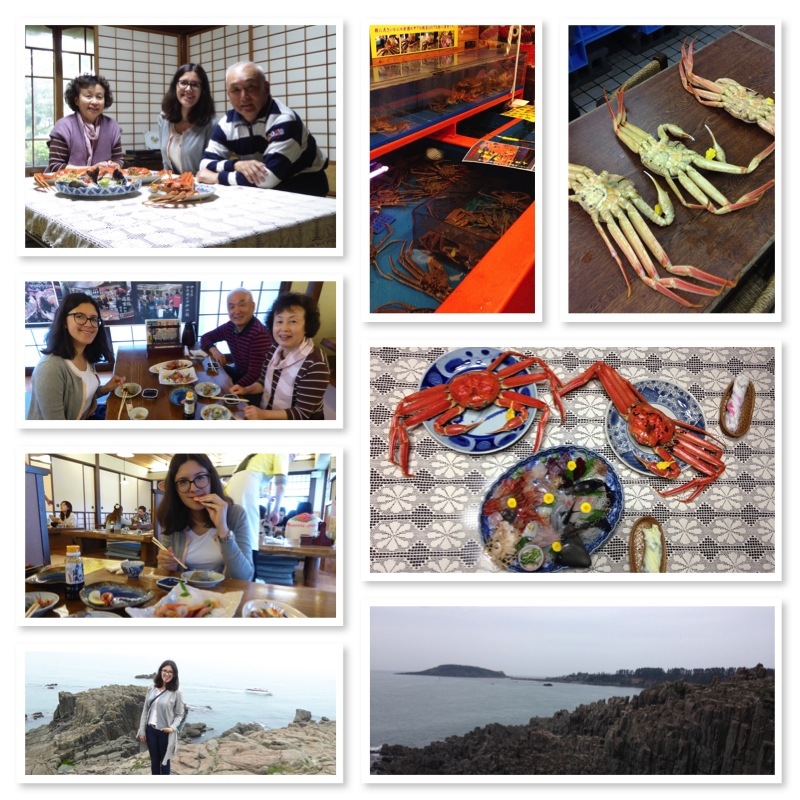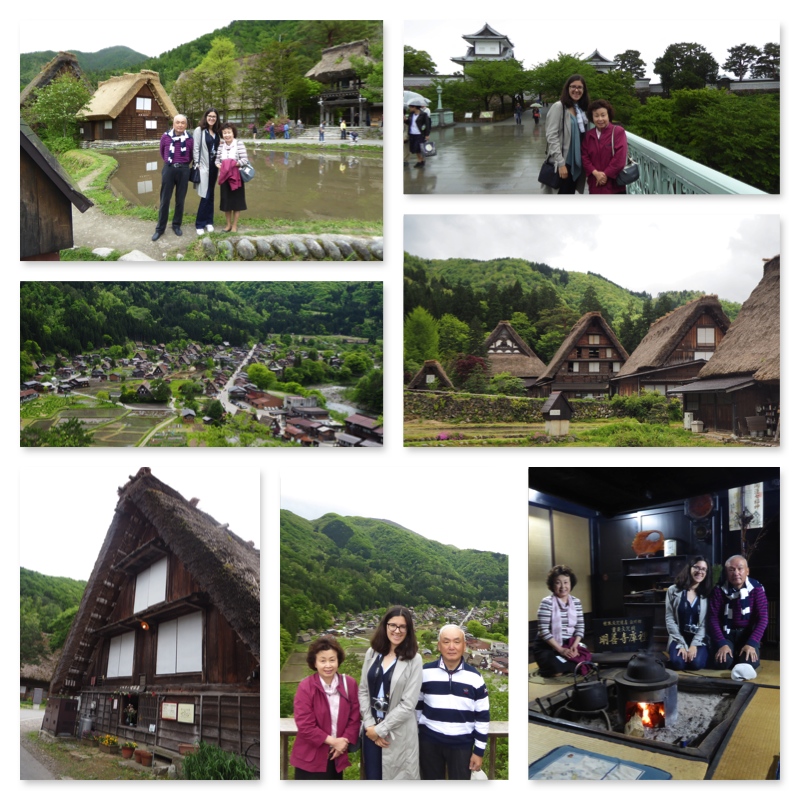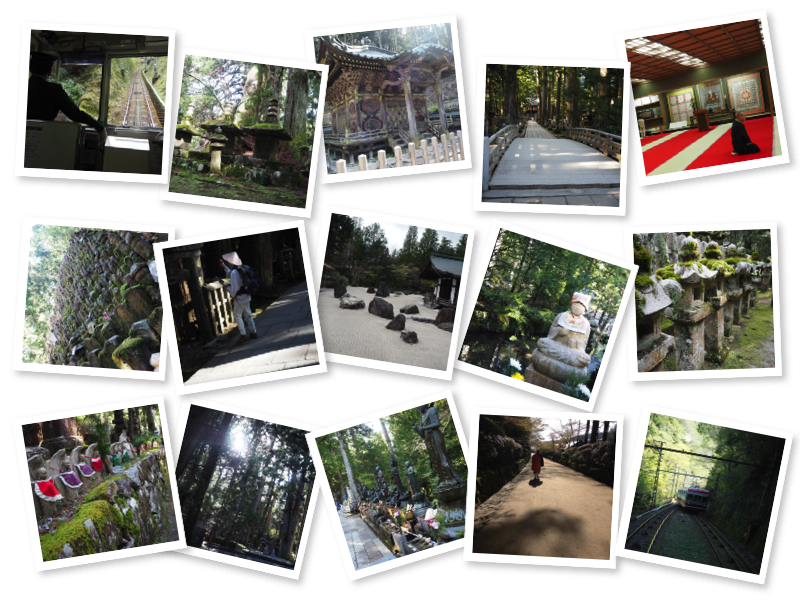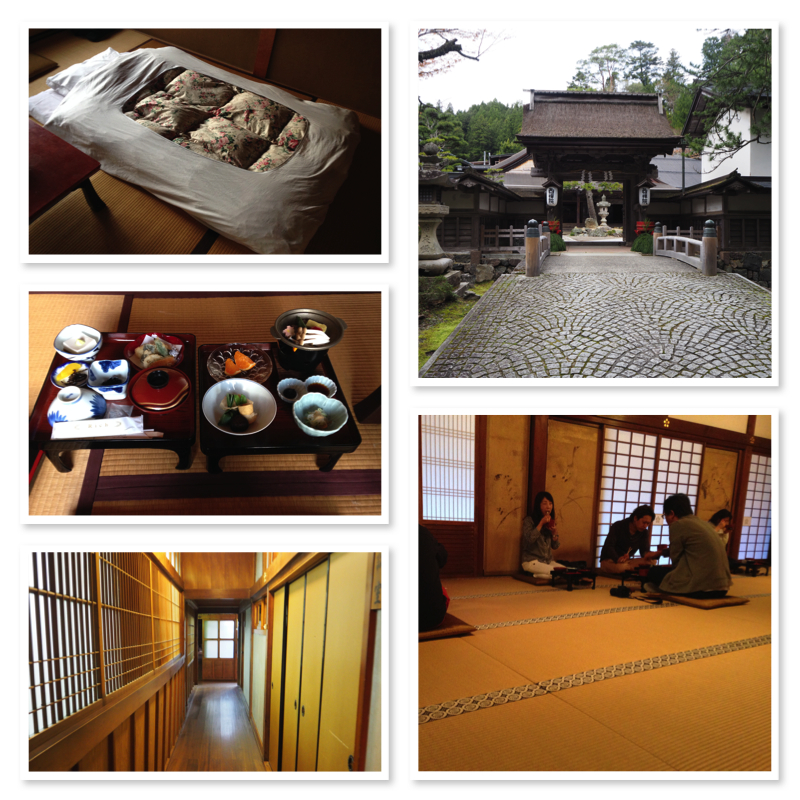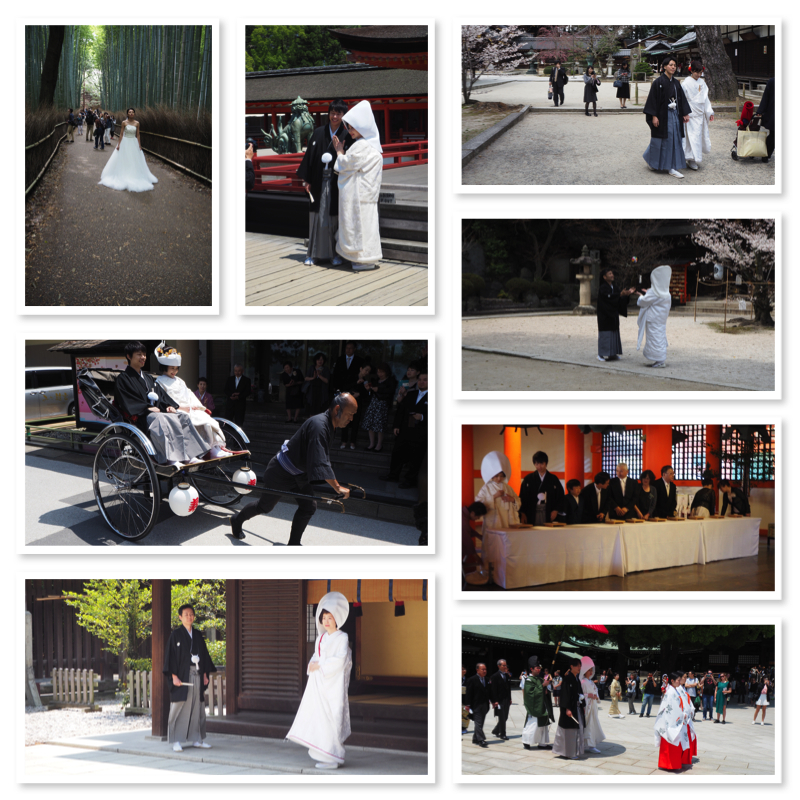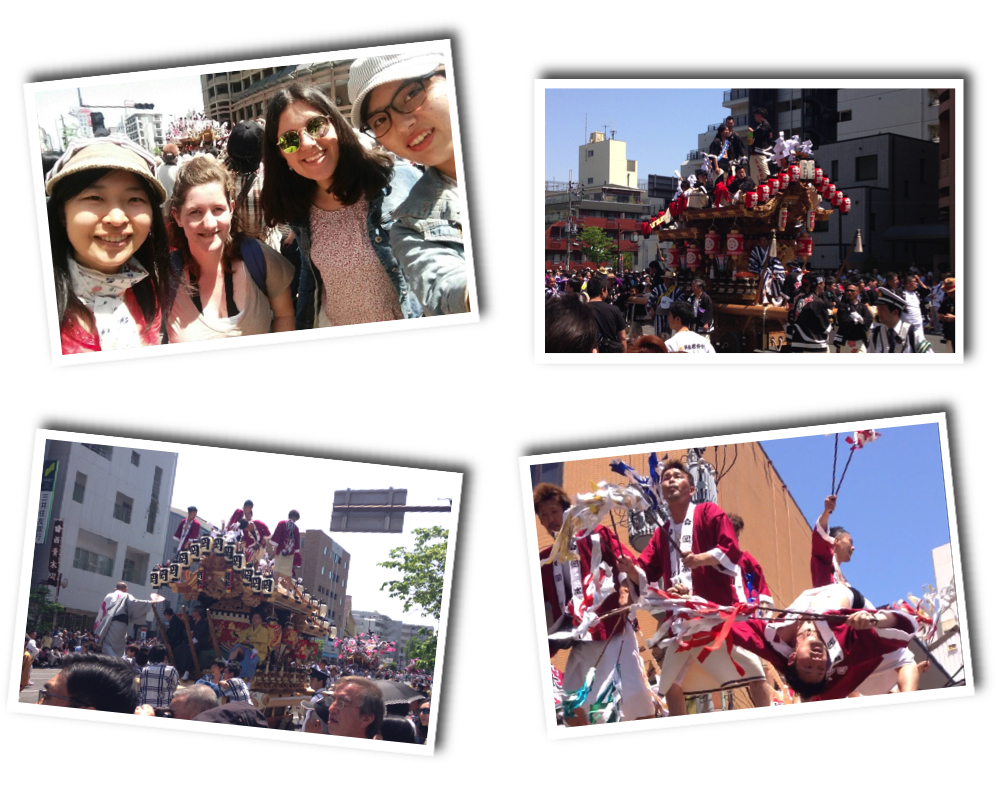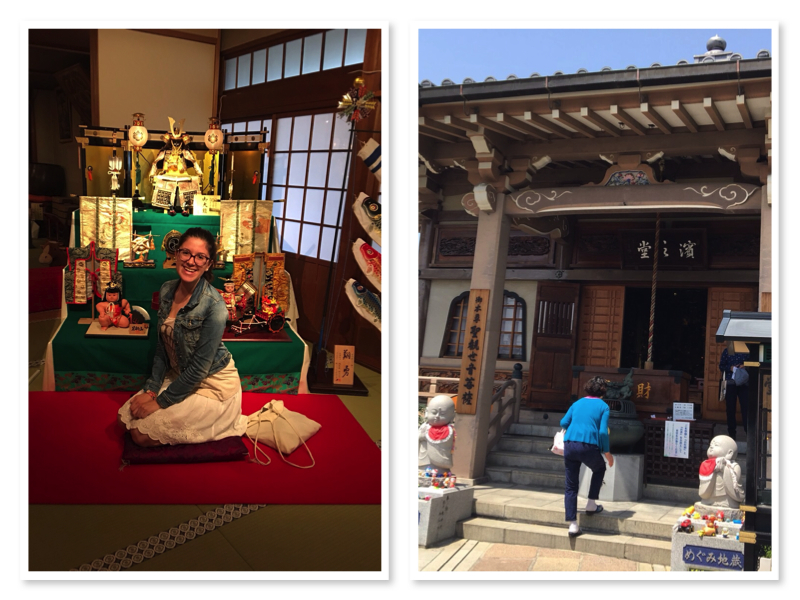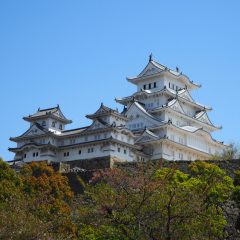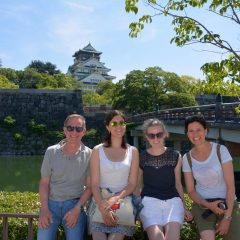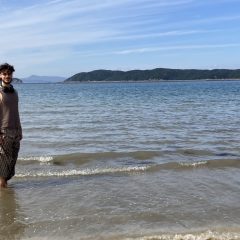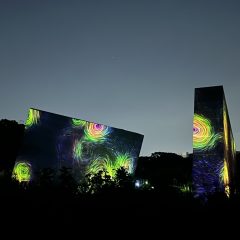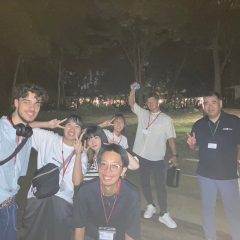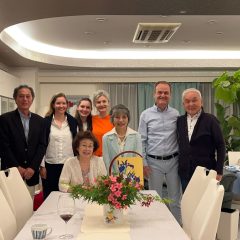☆☆ 3rd report of Anna Götz, 11th scholarship holder of Grünwald foundation ☆☆

Thinking about Japan the most people would come up first with high-tech mega cities. Of course Japan is the eleventh most populated country and Tokyo-Yokohama is the biggest metropolitan area of the world, but Japan has to offer much more than just many people and big cities. Just twenty percent of the land area is under cultivation. The rest contains stunning landscapes. Japan’s nature is immensely multifarious. You can find from high mountains with ski areas over volcanoes, national parks, dense forests, hot springs and paradisiacal beaches nearly everything. The flora and fauna is just as diverse because of the extent of Japan over different climate zones.
I have increasingly noticed this variety during my visits in Kobe. The Rokkō-mountain in the north and the sea in the south bound Kobe, so that the city can offer sand beaches as well as beautiful hiking tracks. I can highly recommend the beach – easily accessible by train -, the herb garden on the Rokkōsan and the view at night from the Rokkōsan on Kobe and Osaka, which is called the “10-million-dollar-view” because of the estimated price of the uncountable lights you can see.
But I fully realised the multifacetedness of the Japanese nature, when I first left the Kansai area during a three-day trip with Mr and Mrs Okamoto to Toyama, where the parents of Mrs Okamoto live. Already during the car drive to Toyama I could watch, that the mountains are getting higher and higher and how their dense forestation is changing. A contrast to this was a stop at the around thirty meters high cliff cost Tōjinbō, which is made of volcanic rock and where Mr Okamoto could buy three of the big crabs for dinner, which were luckily left from the high season. Anything but low-priced, but very delicious!
More from the mountains could I also see on the next day during our trip to the UNESCO World Heritage village Shirakawagō, which is located in the Japanese Alps and which was a hideaway for persecutes in the past. The houses in the village are built with steeply slanting, thatched roofs, in order to withstand and shed the weight of the snow during the often heavy snowfalls in winter. This construction style is called Gasshō-zukuri (eng: prayer-hands construction), because of the similarity of the roof shape to two hands in prayer. Worth mentioning is also the stop on the way home to Osaka in the seaside town Kanazawa on the next day, where we visited the reconstruction of the old castle.
But not just during the trip to Toyama the Japanese nature could cast a spell over me. Also during my excursion to the Kōyasan, a UNESCO World Heritage mountain, I was thrilled about it. 817 Kōbō Daishi chose the Kōyasan as centre of his Buddhist Shingon school, because of its location far away from secular distraction and influence and because of its spiritual and mystic atmosphere caused by the similarity with a Nelumbo called forth by the surrounding eight mountains. Now the Kōyasan is like a big temple complex. It is an oasis of quiescent, contemplation and peacefulness just as many temples in the big cities.
But I could not just visit the Kōyasan, I also could sleep in one of the many temples on the Kōyasan, flit in a Yukata with the monks down the old corridors and eat one day food, which follows the vegetarian, Buddhist rules of the cuisine Shōjin Ryōri. But the highlight of my trip was definitely the morning Ceremony, which began at six o’clock in the morning after my first, surprisingly comfortable and restful night on a Futon in a traditional Japanese Tatami room. I also will not forget Jiro, who quitted his job and lived three days as monk on the Kōyasan and who asked me a little bit anxiously if I think that it is possible to live forever at such a quite place.
On the Kōyasan I could also watch the syncretism of Buddhism and Shintō like many times before. There are for example Shintō shrines on the Kōyasan, which is obviously characterised by Buddhism. In contrast to Germany it is in Japan common to belong to more than one religion. So the Shintōism has around 107 million, the Buddhism around 91 million and the Christianity just 1.2 million followers, whereas the total population is just 127 million. So in Japan you do not have to choose exclusively one religion. Is one religion not giving you what you need, you can take it from another one. But normally one celebration is dominated by the traditions of one religion. Buddhism marks funerals and the remembrance of the decedents. Weddings and the praying for luck and wish fulfilment – for example on New Year’s Eve or before an exam – are dominated by Shintōism. But there is also a trend to marry like Christians and confirm it later Shintōistically, which is not caused by religious beliefs. This is called forth by Hollywood romantic and the possibility to invite more people than just the closest relatives like during a Shintōistic wedding. This is why the priest is often no clergyman and the church is most of the times just a wedding hall in a big hotel.
During my last two month in Japan I could not just watch a few weddings. I also went to a Danjiri matsuri. In the course of this festival after a few rogations elaborately decorated carts, which are shaped like small shrines and which are believed to be the homes of gods, are pulled through the streets, while danjiri rhythms are played on drums and bells and the participants are yelling “Yoi, sa! Yoi, sa!”. Every district has an own cart and tries to trump the others. Very funny!
The Kodomo no hi (eng.: Children’s day) took also place during my stay in Japan. A friend invited me in her temple on the day before the celebration, showed me the preparations for it and explained me the traditions. During the Kodomo no hi the participants are praying for the luck and health of the children, acknowledging their strength and celebrating them.
In general there are every month regional and national celebrations. In the week, in which the Kodomo no hi takes place and which is called Golden Week, are so many celebrations that everything from public transportation to shopping malls, hotels and tourist attractions is extremely crowded. The Golden Week is thankfully already over, when my family is arriving next week and we want to travel around Japan. I cannot wait until they come and I can show them Japan as I got to know and love it and maybe I will get the chance to rediscover Japan again through their eyes!


